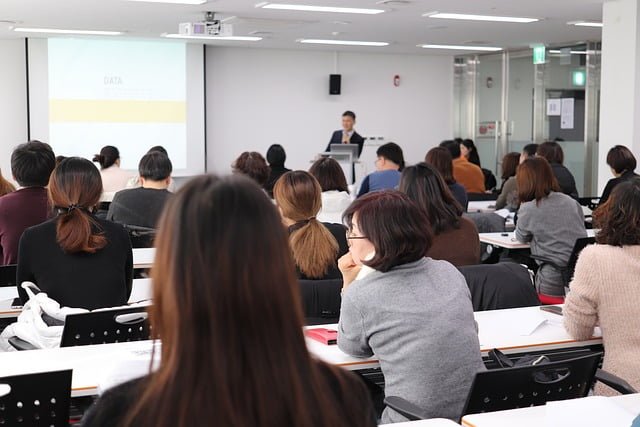
Challenges of Teaching
Table of Contents
Unveiling the Challenges of Teaching: A Perspective on the Frustrations and Support Faced by College Educators
Disclaimer: This article is intended to generate discussion and shed light on the frustrations faced by teachers. It is important to note that the content presented is not specific to any particular school or institution. The information provided is based solely on the confessions of two teachers and should not be construed as a representation of the entire teaching community.
As a blogger, I have witnessed the journey of my two friends, dedicated college teachers. Behind the scenes, beyond the classroom walls, lies a world of untold frustrations teachers endure. This article sheds light on educators’ challenges, drawing insights from personal experiences. We will explore the tensions between meeting course objectives and student workload, the dichotomy of student performance versus grade expectations, the impact of grade comparisons, the emotional blackmail experienced by teachers, and the influence of personal emotions on teaching strategies. Let us embark on a thought-provoking exploration into the complex realm of a college teacher.

Challenges of Teaching | Sources of Frustrations
Source of Frustration 1: Balancing Course Objectives and Student Workload
One of the primary frustrations faced by college teachers lies in finding a delicate balance between meeting course objectives and considering the workload of their students. Teachers are driven by their desire to impart knowledge, facilitate intellectual growth, and achieve desired learning outcomes. However, they are also mindful of the demands placed on students across their various courses.
This creates a challenging dilemma for teachers as they navigate the fine line between covering essential content and preventing students from feeling overwhelmed by excessive assignments and assessments. Striving to meet course objectives while accommodating students’ workload can be emotionally taxing for educators. The pressure to fulfill their responsibilities as educators and the risk of being perceived as overly demanding adds a layer of frustration.

Challenges of Teaching
Source of Frustration 2: Student Performance and the Quest for Higher Grades
College teachers face a significant challenge in dealing with the discrepancy between students’ poor performance and their relentless pursuit of higher grades. These educators invest considerable time, energy, and expertise in creating engaging lessons and fostering a conducive learning environment. However, many students prioritize grades over genuinely understanding the subject matter.
One contributing factor to this frustration is the presence of students from diverse educational backgrounds. Students who have previously received high grades may not possess the necessary skills and knowledge to meet the rigorous academic demands of college. This disparity in expectations and abilities creates a conflict between students and teachers as the latter strive to bridge the gap.
Moreover, the pressure to achieve top grades can lead some students to focus on memorization or shortcuts rather than engaging in meaningful learning. This divergence between performance and genuine knowledge acquisition can dishearten educators who aim to inspire a passion for learning and critical thinking.

Challenges of Teaching
Source of Frustration 3: Comparing Grades and Evaluation Backlash
Another source of frustration arises from the practice of comparing grades among students and the subsequent evaluation backlash faced by teachers. Sometimes, teachers are unfairly labeled as “stingy” when assigning grades. This perception can arise from students comparing the grades of different teachers, leading to accusations of bias or unfairness. Consequently, some teachers may face retaliatory actions, such as receiving lower scores in student evaluations or the Teacher’s Behavior Inventory. This power dynamic places teacher at the mercy of students, whose influence becomes prominent after the semester ends, leaving educators unable to provide their side of the story. The impact of grade comparisons and evaluation backlash can result in a compromised learning environment and a sense of injustice among teachers.
Source of Frustration 4: Emotional Manipulation and Limited Support
College teachers often encounter student manipulation, leaving them feeling powerless and overwhelmed. Some students employ tactics to exert influence and fulfill their demands, creating frustration for educators. The limited support systems available, with superiors not present in the classroom, intensify teachers’ burden, impacting their well-being and job satisfaction.
For industry practitioners and part-time teachers, the emphasis placed on student evaluations by schools can lead to difficult choices. The pressure to maintain a positive professional reputation and job security becomes significant. Consequently, some educators may prioritize their main businesses or full-time jobs over teaching commitments.

Challenges of Teaching
Source of Frustration 5: Personal Emotions and the Evolution of Teaching Strategies
Teachers, being human, are not immune to emotions, and at times, frustrations can seep into their teaching strategies. Personal experiences and emotions can influence how teachers interact with their students, design lesson plans, and make instructional decisions. Frustrations encountered in one class may inadvertently impact future interactions with the same set of students. While teachers strive to maintain professionalism, the emotional investment in their students and their success can blur the lines between objectivity and subjectivity. Reflecting on these emotions and their effects on teaching strategies is crucial for continuous growth as educators.

Factors that Sustain a Teacher’s Passion: Finding Strength Amidst Frustrations and Challenges of Teaching
In the previous section, we delved into the frustrations college educators face. While these challenges can be overwhelming, certain factors sustain a teacher’s passion and reignite their commitment to the profession. Let us explore these factors that provide solace and strength to teachers amidst their struggles.
Personal Notes and Words of Appreciation from Students
Even the smallest gestures can profoundly impact a teacher’s motivation. Personal notes and heartfelt words from students who genuinely appreciate the teacher’s efforts are a powerful reminder of the difference they make in their students’ lives. These tokens of gratitude provide the necessary affirmation and encouragement that every teacher needs to persevere and continue making a positive impact.

Challenges of Teaching
Forgiveness and Growth
Teachers often find themselves in situations where they must reprimand students for their actions. However, it fosters a sense of hope when students demonstrate resilience, maturity, and the ability to learn from their mistakes without holding grudges against the teacher. It reaffirms the teacher’s belief in the transformative power of education. Witnessing the growth and development of students, both academically and personally, creates a profound sense of fulfillment for teachers.
Graduated Students Who Maintain Connection
One of the greatest rewards for a teacher is seeing their students thrive beyond the classroom. When former students, who have already graduated, continue to maintain a connection with their teacher, it is a testament to the enduring impact the teacher has had on their lives. Encountering students in public places and witnessing their enthusiasm as they greet their teacher reminds them of the lasting bonds forged through education.

Challenges of Teaching
Support from Peers and Superiors
The support and camaraderie among fellow teachers and superiors play a crucial role in sustaining a teacher’s passion. The evaluation forms can sometimes contain unjustified comments that hurt deeply. However, hearing encouragement from colleagues who have faced similar situations and can empathize with the challenges provides solace and renews a teacher’s determination to persevere. The understanding and support of peers create a nurturing environment where teachers can seek guidance, share experiences, and find strength in unity.
Prayer and Self-Reflection
Amidst the frustrations and challenges, teachers often turn to prayer and self-reflection as sources of solace and guidance. Recognizing that no one is perfect, teachers constantly self-evaluate and strive for personal growth. Prayer offers strength and resilience, allowing teachers to find solace in their faith and seek guidance in times of difficulty. Through self-reflection, teachers identify areas for improvement, learn from their experiences, and continue to evolve as educators.

Challenges of Teaching
Conclusion:
Teaching is a profession without its fair share of frustrations and challenges. Educators often find themselves in a complex web of expectations, from the delicate balance between course objectives and student workload to the constant juggling act of addressing poor student performance while managing their desire for higher grades. However, amidst these frustrations, there exist factors that serve as a driving force, sustaining a teacher’s passion and commitment to positively impacting their students’ lives.
One such factor lies in the power of personal notes and heartfelt appreciation from students. These small gestures are powerful reminders of teachers’ profound influence on their student’s educational journey. Furthermore, witnessing students who demonstrate growth and forgiveness even after facing reprimands emphasizes the transformative potential of education and brings a sense of hope and fulfillment to teachers.

Challenges of Teaching
Another sustaining factor is the enduring connection with graduated students who maintain contact with their former teachers. This ongoing relationship validates teachers’ lasting impact and acts as a source of pride and joy, reaffirming their dedication to the profession. The recognition and support from colleagues and school administrators also play a pivotal role, providing a sense of camaraderie and creating an environment where teachers can find solace and strength during moments of frustration.
In addition, practicing self-reflection and seeking solace through prayer offers teachers a means to sustain their passion. Engaging in introspection allows educators to continuously improve their teaching strategies, identify growth areas, and adapt to better serve their students. Furthermore, drawing strength from prayer helps teachers navigate difficulties, find resilience, and overcome the challenges they face in their professional journey.

Challenges of Teaching
More Stories
- Childless Family: Exploring the Advantages, Disadvantages, and Struggles
- Nurturing Trust: Finding Genuine Confidants and Coping with Betrayal
- Traits That Captivate Women | Exploring the Irresistible
- Getting Over a Breakup | Navigating the Journey of Healing and Hope
- Why Personal Relationship Is Important | 10 Tips to Develop and Nurture
- MANJUYOD WHITE SANDBAR TRAVEL GUIDE
- VIETNAMESE FOOD | EXCITING DISHES TO TRY
- THINGS TO DO IN PATTAYA, THAILAND
- YOGYAKARTA, INDONESIA | INTERESTING PLACES TO VISIT
- LIST OF POPULAR FILIPINO FOOD / DISHES
- BACOLOD TOURIST SPOTS | THINGS TO DO + NEGROS OCCIDENTAL
- BEST HOME ACNE REMEDIES
- VIGAN TOURIST SPOTS | THINGS TO DO
- 25 THINGS TO DO IN CAMBODIA | TOURIST SPOTS
- KUALA LUMPUR TOURIST SPOTS
- DINUGUAN WITH PUTO | QUAN DELICACIES
- BELMONT HOTEL MANILA, SAVOY HOTEL MANILA | #SafeStay Campaign
- GINATAANG HALO-HALO | BINIGNIT | Quan Delicacies
- BICOL EXPRESS: CREAMY, SPICY AND FLAVORFUL | Quan Delicacies
- DINUGUAN RECIPE ( BLOOD STEW )
- BICOL EXPRESS RECIPE: A Filipino Dish to Try
- CLOTH FACE MASK | RUSH ORDER TEES
- TOMATO GROWING TIPS | CONTAINER GARDENING




1. Question 1: How did Jojo Vito Designs Gallery respond to the emerging trend of “plantitos” and “plantitas” during the global pandemic? Describe how the gallery recognized the opportunity presented by this trend and how they leveraged the principles of design thinking to craft products tailored to the unique preferences and requirements of this community.
-During pandemic people are investing their money to the plants. Jojo Vito grabs this opportunity to create products that attract to the community.
2. Question 2: In the context of the article, what role did empathy play in the design thinking process adopted by Jojo Vito Designs Gallery? Explain how the gallery empathized with the needs and desires of the “plantitos” and “plantitas” community, and discuss the ways in which this empathetic approach contributed to the creation of successful and resonant products.
-Jojo Vito put himself in the situation of plantitos and plantitas by understanding their needs and wants. He realized that the community invest their money to a unique jar and pots, so he craft a fiberglass jar and pot.
3. Question 3: Trace the stages of the design thinking process as applied by Jojo Vito Designs Gallery in crafting their fiberglass jars and pots. Detail each phase, from empathizing with the community’s needs and desires, defining the design challenge, ideating creative solutions, prototyping, testing with the community, iterating based on feedback, and finally, implementing and launching the products. How did this iterative process contribute to the gallery’s success in addressing the unique demands of the pandemic landscape?
Empathize – They understand the needs and wants of the plantitos and plantitas
Define- How could Jojo Vito Designs Gallery create fiberglass plant pots that seamlessly merge modern aesthetics with features conducive to robust plant growth?
Ideate – They exploring multiple shapes, sizes, materials, and inventive attributes. The fruits of creativity included concepts like durable plant pots in various forms, colors, and sizes, catering to experienced plant enthusiasts and those novices seeking convenient care solutions.
Prototype – They transform their ideas into physical prototypes. Their prototypes allowed the stakeholders to experience the prototypes.
Test – They prototypes were shared on social platform and community of plantitos and plantitas. They recieved suggestion of colors, size and design.
Iterate – They adjust their prototypes by improving the shape, drainage system and design.
Implementation – The gallery fervently unveiled its product line as the final designs matured. Leveraging the potency of social media, captivating visuals were woven into narratives that resonated with plantitos and plantitas.
Evaluation – After implementing the product. The users of the product, they share their experiences. They also gaining more ideas for their product.
Iterative process contribute to the gallery’s success in addressing the unique demands of the pandemic landscape because they receiving feedbacks and opinions of the community to adjust their product based of their taste or wants.